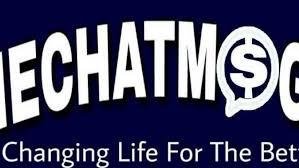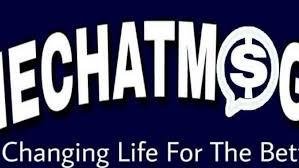The underbalanced drilling market is expanding rapidly as the oil and gas sector continues to seek efficient and cost-effective drilling techniques. Underbalanced drilling (UBD) is emerging as a preferred solution, particularly in complex and mature reservoirs, where minimizing formation damage and improving hydrocarbon recovery is essential. This technique enables drilling operations with the wellbore pressure lower than the formation pressure, offering benefits such as increased drilling speed, reduced differential sticking, and minimized reservoir damage.
As the energy industry explores deeper, more challenging reserves, the adoption of UBD technology is expected to surge, providing companies with enhanced operational efficiency, real-time formation data, and greater well control.
Market Dynamics
Increasing Demand for Efficient Drilling Solutions
The global energy sector is under immense pressure to meet growing consumption demands while maintaining profitability and sustainability. In this environment, UBD offers a competitive edge by reducing drilling time, limiting formation damage, and improving well productivity. These advantages are particularly important for aging fields and unconventional reserves, where conventional drilling often leads to formation impairment and reduced hydrocarbon recovery.
The growing awareness of UBD’s economic and technical benefits is encouraging exploration and production (E&P) companies to adopt the method, particularly in regions with challenging geology. Its ability to mitigate formation damage and enable real-time reservoir evaluation makes it highly suitable for wells where maximized production is a priority.
Expanding Unconventional and Mature Field Operations
Unconventional reserves such as shale formations, tight gas, and coalbed methane are becoming key sources of energy. These formations typically require advanced drilling methods, and UBD has proven effective in minimizing drilling-induced damage in such environments. Additionally, the re-development of mature fields around the globe is driving demand for techniques that can extract residual hydrocarbons efficiently—an area where UBD stands out.
As more operators look to boost extraction from older wells and marginal fields, the adoption of underbalanced drilling technology is gaining significant traction. It enables higher rate of penetration (ROP), facilitates better cuttings transport, and supports longer bit life—benefits that directly enhance field economics.
Technological Innovations and Equipment Advancements
Recent innovations in UBD equipment, such as rotating control devices (RCDs), nitrogen injection systems, and real-time monitoring tools, are significantly improving the reliability and applicability of UBD techniques. The integration of digital technologies—including sensors, AI-driven analytics, and cloud-based platforms—is enabling better pressure management and data analysis during drilling.
These advancements have made UBD more adaptable to high-pressure high-temperature (HPHT) environments and offshore fields, opening new frontiers for market growth. Service providers are also focusing on automated control systems and modular UBD packages that simplify deployment and reduce operational costs.
Competitive Landscape
The underbalanced drilling market is characterized by a mix of global oilfield service providers and regional specialists, all aiming to capitalize on the rising demand for efficient drilling practices. Major players are adopting strategies such as strategic alliances, technology partnerships, and regional expansions to strengthen their market presence.
Many companies are investing in research and development to improve UBD performance, with a focus on system integration, downhole tool durability, and predictive maintenance capabilities. These innovations are helping them offer more reliable and cost-effective solutions to E&P companies operating in technically challenging fields.
Additionally, market players are tailoring UBD systems to meet specific regional needs, such as desert operations in the Middle East, deepwater wells in South America, and complex shale plays in North America. This customization approach allows companies to provide value-added services and maintain competitive differentiation.
Regional Insights
North America
North America dominates the underbalanced drilling market, with the U.S. leading in adoption due to its extensive shale reserves and focus on maximizing production efficiency. The region’s favorable regulatory framework, access to advanced drilling infrastructure, and high investment in unconventional resources support sustained market growth.
Middle East and Africa
The Middle East is another prominent region for UBD adoption, with countries like Saudi Arabia and Oman investing in enhanced oil recovery (EOR) and field rejuvenation. UBD is increasingly used to improve output from mature wells and complex carbonate formations. In Africa, offshore exploration projects in Angola and Nigeria are also contributing to regional demand.
Asia-Pacific
In Asia-Pacific, countries such as China, India, and Indonesia are turning to underbalanced drilling to unlock challenging reserves and improve recovery rates from declining fields. The region is witnessing a surge in domestic exploration activities supported by favorable government policies and growing energy demand, making it a promising market for UBD technology.
Challenges and Opportunities
Despite its advantages, the underbalanced drilling market faces challenges such as high initial investment, operational complexity, and the need for skilled personnel. Safety concerns related to well control and the risk of gas influx in certain formations may also hinder adoption in less experienced markets.
However, these barriers are being addressed through training, standardization of procedures, and the development of user-friendly equipment. The increasing application of digital monitoring and control systems is reducing complexity and improving safety margins, thereby encouraging wider adoption.
Moreover, the market is witnessing a growing interest in integrating UBD with managed pressure drilling (MPD) to achieve greater flexibility and efficiency in well control. Such hybrid approaches present new opportunities for innovation and service differentiation.
Outlook
The underbalanced drilling market is poised for steady growth, supported by the rising demand for efficient and sustainable drilling technologies, expansion of unconventional resources, and the reactivation of mature wells. As industry players continue to invest in innovation and regional outreach, UBD is expected to become an integral part of next-generation drilling operations.
For expert market intelligence and comprehensive data insights, businesses can rely on Market Research Future to navigate trends and drive strategic decision-making.
More Trending Reports:
Instrument Transformer Equipment


